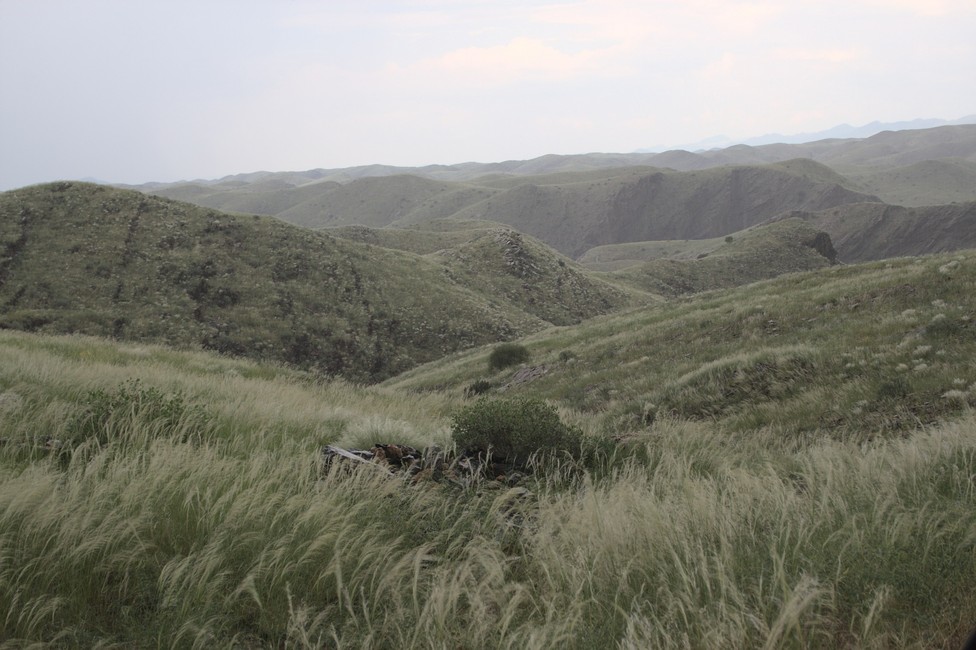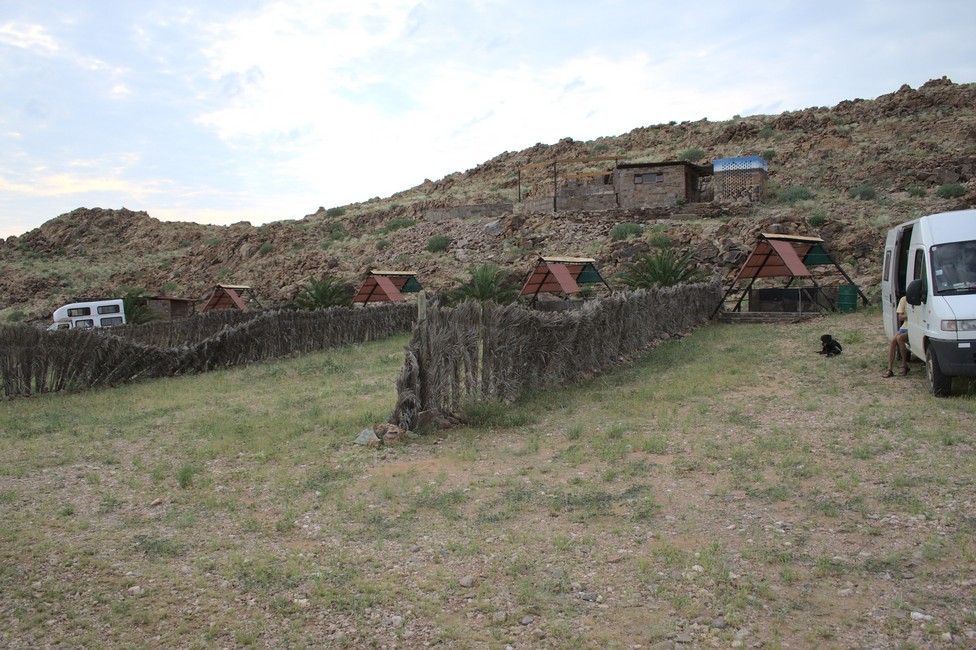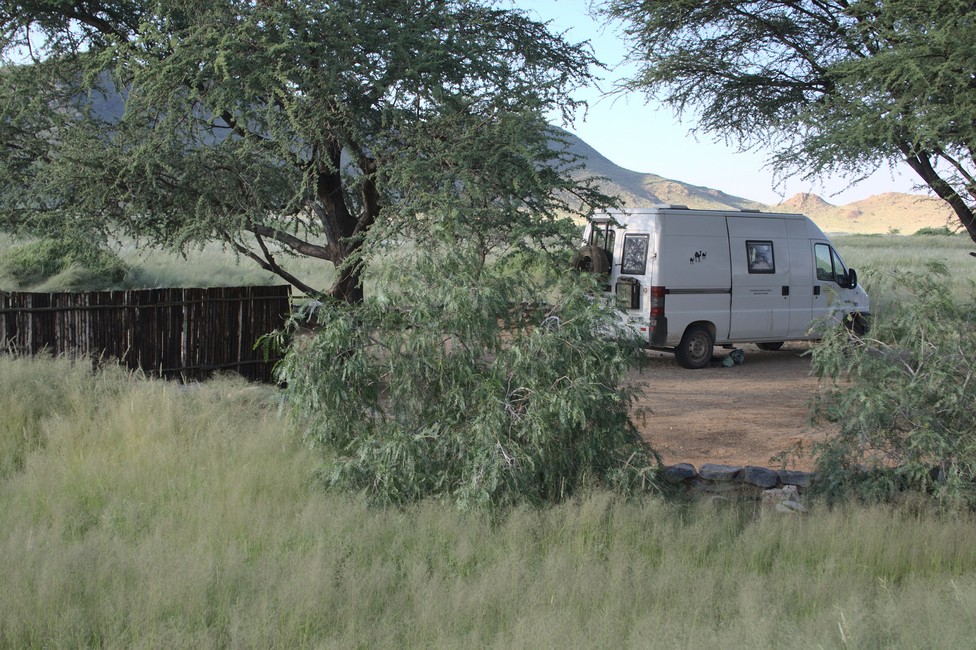We leave Swakop, as it is called short, and soon find ourselves back in the desert, the Namib Naukluft National Park.

The scenery is magnificent and we take our time.

It is getting late and we check in at Rostock Ritz. Sounds good, but it is a simple camping amidst perfect scenery.

The driveway to the front desk is several kilometers long, as is the entrance to the campground. The price of one night corresponds with the name.

But nothing helps, we camp quite nice and there is hot water.
In the evening we read more about Namib Naukluft National Park. It is one of the largest national parks in Africa. It covers an area of about 49,768 square kilometers (19,216 square miles) and encompasses parts of both the Namib Desert, one of the oldest deserts in the world, and the Naukluft Mountain Range.
Some of the highlights:
Sesriem Canyon: This natural gorge was formed by the Tsauchab River and is located near the park’s entrance. Visitors can walk along the canyon, which features unique rock formations and allows for a closer look at the area’s geology.
Namib-Naukluft National Park encompasses a significant portion of the Namib Desert, which is considered one of the oldest deserts on Earth. The desert’s unique ecosystem supports a variety of plant and animal life that have adapted to survive in the arid conditions.
The Naukluft Mountain Range runs through the park and offers a striking contrast to the desert landscape. The mountains provide opportunities for hiking, scenic drives, and exploring rugged terrain.
Despite the harsh desert conditions, Namib-Naukluft National Park is home to a surprising array of wildlife. Visitors may spot oryx, springbok, zebra, jackals, and a variety of bird species. The park is also known for its smaller desert-adapted creatures like lizards and insects.
The next day we still drive through the National Park but our destination is Sossusvlei.
We get as close as possible to the dunes to stay overnight at a nice campsite to start early in the morning into the dunes.

